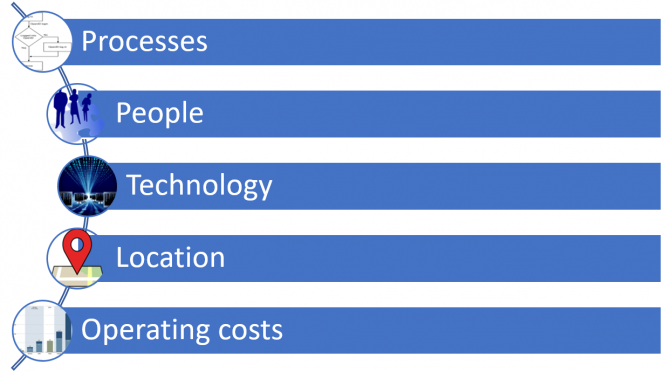
*****If you are interested in learning more about Target Operating Models you could sign up to join my online training course on it which launches on 23rd May. You can sign up now for a 50% discount – Handling Transformation using a Target Operating Model.
A Target Operating Model shows how an organisation should be supported by its employees and its organisational structure to deliver and execute the organisations future strategy. It provides a visual overview of how a business can be structured to implement an organisations strategy as each of the main business activities are represented.
A Target Operating Model is different to a firm’s business strategy. The latter will change frequently based on external factors. A Target Operating Model provides the foundation and flexibility required to execute the firm’s goals. A business strategy is essential for helping achieve the target operating model and in turn influences the strategy.
An Organisation’s Target Operating Model (TOM) may need to be developed to support its strategy due to:
- A new organisation
- Changes / new processes
- Transformation projects
- Increased efficiencies required
- New skillsets or level of skillset required
- To support an increase in volumes or incorporate new business
- Changes to strategy to gain competitive advantage
- To meet new key performance indicators
- Strategic cost reduction opportunities
The audience will vary depending upon the reason for a new target operating model but could include:
- Senior executives
- Strategy / Transformation / change teams
- Marketing teams
- Project teams
- Risk managers
- Finance
- Information Technology (IT)
- Operational teams
- Human Resources
Anyone involved in the analysis for developing a Target Operating Model will need good facilitation and stakeholder management skills to facilitate the required discussions and gain agreement. They must also be comfortable with engaging higher levels of management and with different methods of communication. Documentation may be required at different levels to gain agreement varying from high level presentation slides to more detailed word documents. Assumptions must be listed and high-level principles to make sure all stakeholders have a common understanding.
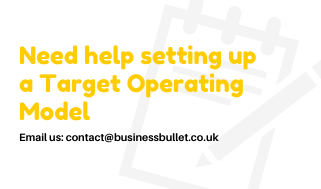
There are 5 main components to writing a Target Operating Model. These are:
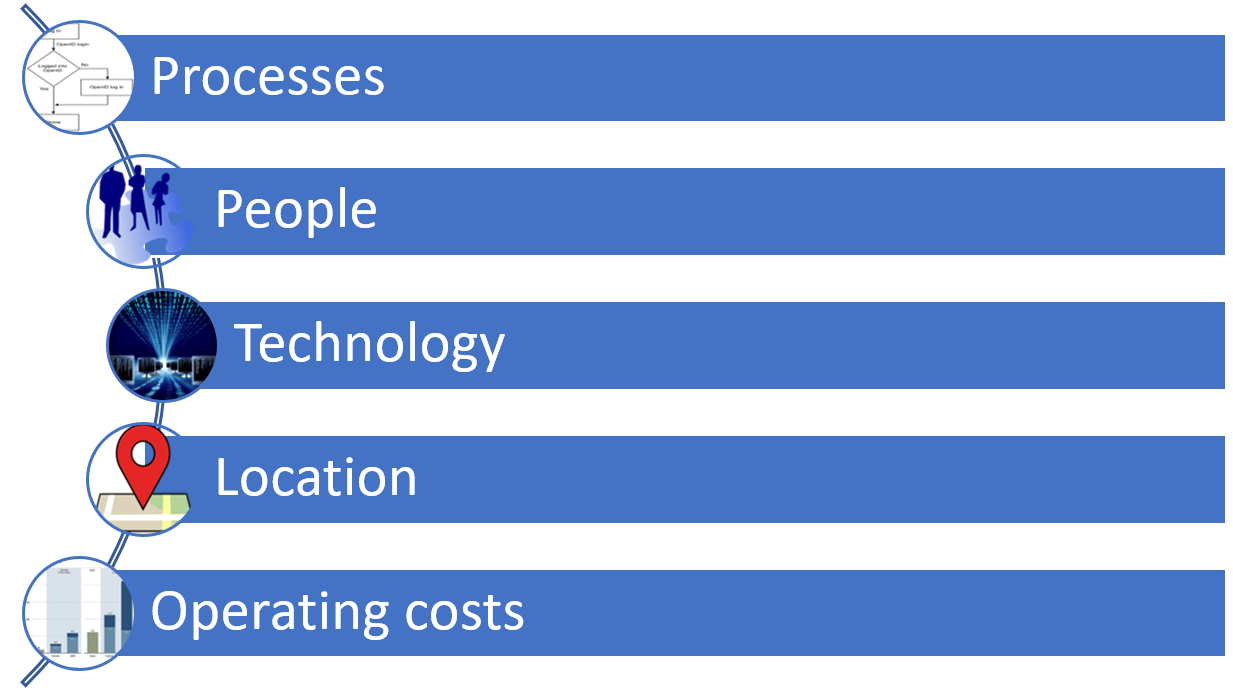
Processes
Identification of new or improved processes are a typical starting point for analysing changes required. If there are new processes that managers believe create work over and above their existing capacity or new skill sets required then this may mean a change to the target operating model. Studying each new process will help establish how much additional work will be generated and whether changes need to be made.
The value chain methodology developed by Michael Porter is a method for identifying the core and supporting processes in a business. This was mainly designed for the purposes of the manufacturing industry but can be adapted to suit other industries.
Other methods for understanding the processes is to study existing organisation structure charts to identify the departments impacted and the employees to speak to. Once the impact of the processes is understood it will be easier to identify the people required to support them and the technology.
People
The next step for will be to then identify the following for each new or impacted process:
- The roles required
- Team/department and reporting lines
- Number of people in each role
- Skillset – knowledge and Grade levels
- Where to obtain from – can it be absorbed with the existing people, additional people or be outsourced
- Whether full time, contractors etc.
- Length of time required
- When required
Technology
This is for identifying the target end state of the IT systems architecture and principles to support the processes and people.
Considerations must be given to any changes needed in:
- Computer systems
- Manual systems
- Data feeds
- Infrastructure
- Hardware
- Other supporting technologies
Questions will need to be asked in terms of what already exists, the organisations IT strategy and whether the required processes are different to warrant a bespoke solution or whether pre-existing solutions can be used can be adapted.
It also needs to be considered how any new systems can be integrated and maintained.
Location
The physical locations also need to be considered especially if an organisation is spread over different sites.
Operating costs
An understanding is required as to the impact of the operating costs and any savings related to implementing the new target operating model. This will help establish the business case for making the changes and will form part of the evaluation criteria for success.
Summary
A Target Operating Model is essential for supporting the business strategy and the goals of the company. As previously listed there could be many occasions where the Target Operating Model needs to be impact assessed to continue to support the strategy and remain competitive.
Understanding the Target Operating Model requires an understanding of the processes, people required, IT systems, location and operating costs. The skills involved required an understanding of these areas and good communication between the senior management to gain consensus, an agreed approach for rolling out and a knowledge of who needs to be involved to make it happen. This could have a big impact on people so careful consideration must be made with regards to timing and it’s impact to ensure that the changes are carefully managed.
*****If you are interested in learning more about Target Operating Models you could sign up to join my online training course on it which launches on 23rd May. You can sign up now for a 50% discount – Handling Transformation using a Target Operating Model.
If you have found this article useful then you might like my book – The Business Analysis Handbook – Techniques and Questions for better Business Outcomes. The book is available from www.koganpage.com and all major print and e-book retailers.

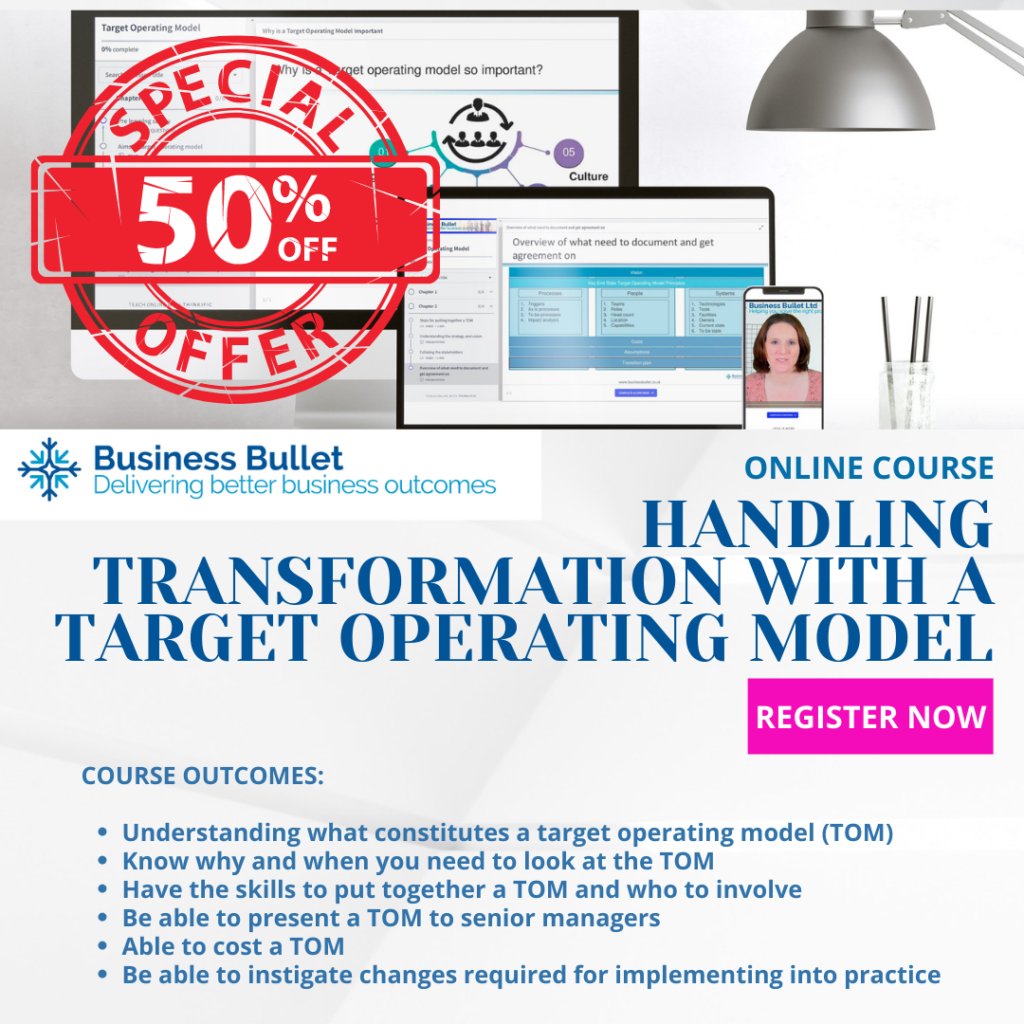
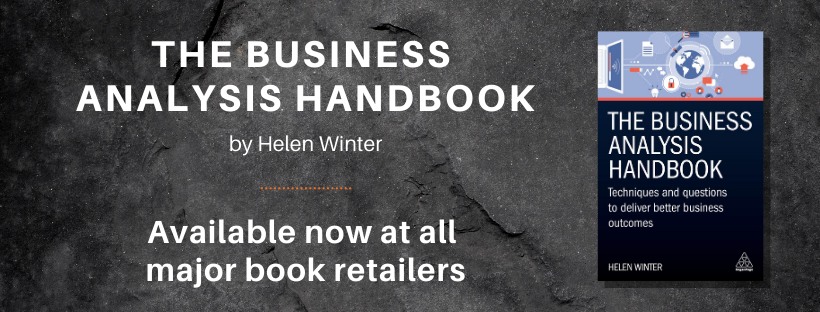
highly recommended for helping emerging candidate and enterprises.
i
Thanks glad you found the article useful and can recommend to others.
Regards, Helen